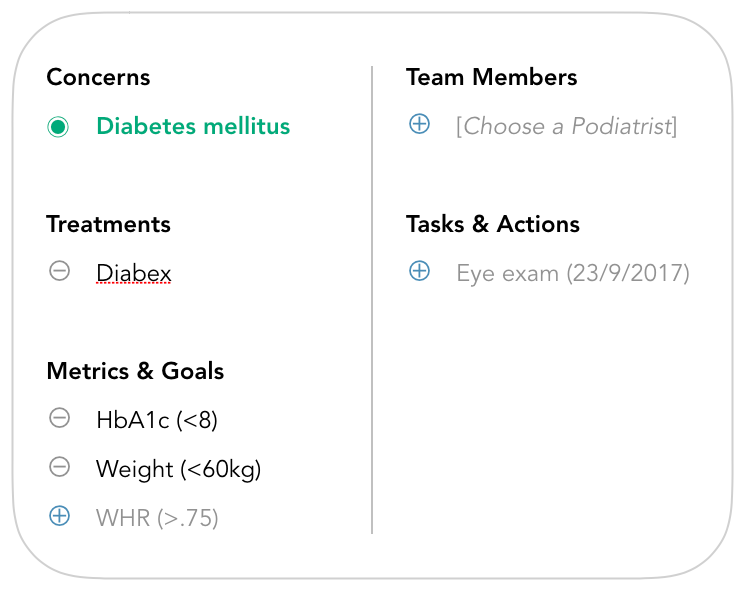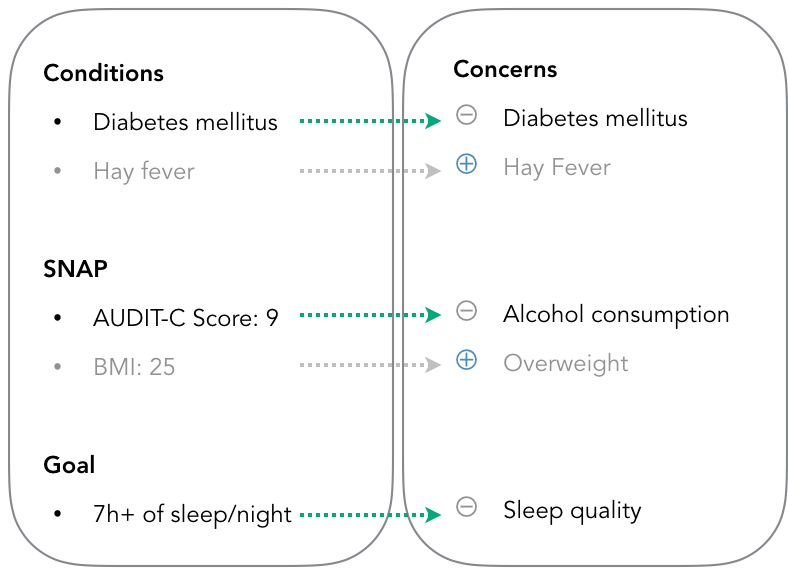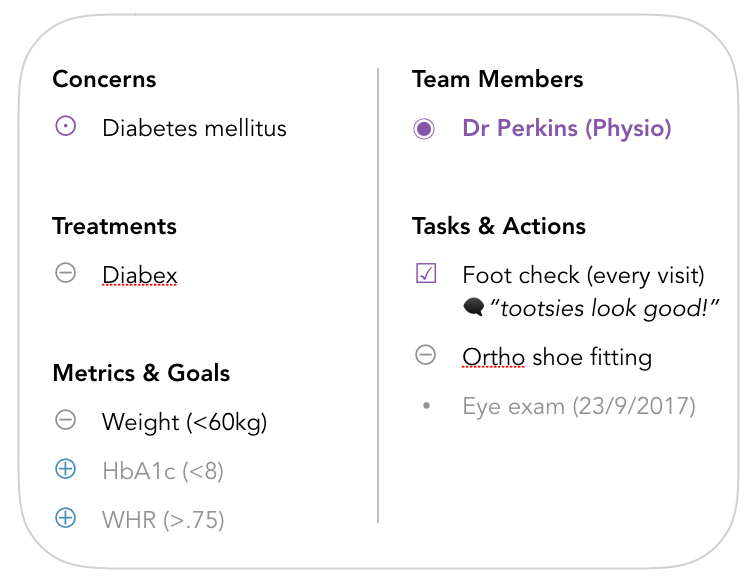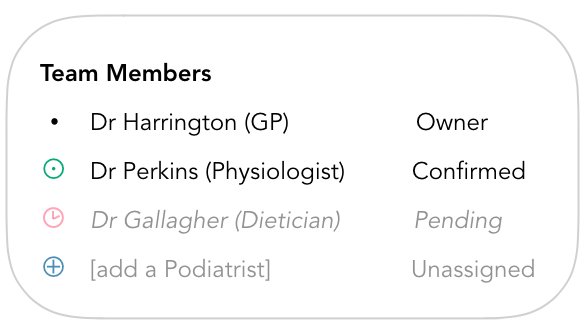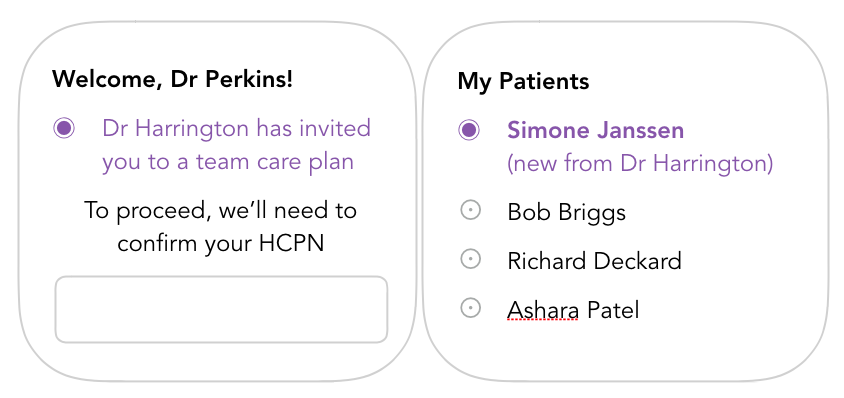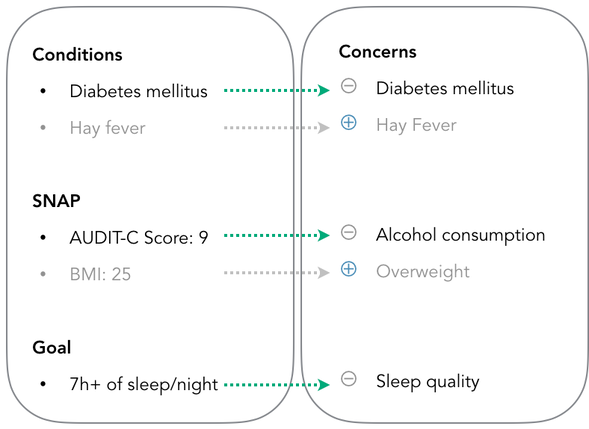
Designed: 2017
Company: Medical Director Product: Helix Customer Audience:
|
Preventative, holistic care is the best medicine. For this project, we aimed to connect the dots, making it easy for doctors and patients to create and follow a plan for wellness.
As patients develop a chronic illness, their health can quickly spiral into comorbid conditions— Diabetes often begets heart disease, which increases the risk of stroke, and so on.
Doctors who treat these patients strive to catch ailments early, and work with the patients to develop a program of care. Often, additional people will be involved— specialists, nurses, or family and friends who help care for the patient. Each may be responsible for a certain component of care, but need to be aware of the bigger picture. Creating a plan involves taking stock of all current concerns (conditions, medications, personal factors), and setting a series of goals and tasks to manage and monitor each element— this can be complex and confusing, and it becomes difficult to keep everyone on track. To keep things simple, we need to surface the key points for each person involved, and keep the lines of communication open— this allows them to create, follow, and annotate the plan as they progress together. |
|
Visualizing the relationship between the key components of a care program makes it easier to see how we can organize the IA.
When assembled into a hierarchy, the plan's reason for being (a particular condition) is at the top. |
|
Each particular condition will dictate which treatments are administered, the additional helpers who may be needed, and the goalposts which will be used to measure improvement.
These items are varying degrees of standard for each condition— for example, blood sugar will be a significant item for all diabetics, and most will also see a podiatrist. A patient who suffers from this illness will likely have all of these items present in their record. |
|
If the system can be trained to assume relationships between common elements, the doctor will only need to choose which condition to include, and the system can bring along the related items from the patient's record.
If it knows which metrics are in a "danger zone" (such as historically high blood pressure), it will even be able to propose items for inclusion. This shortens the plan creation time considerably, as the doctor would only need to fill in gaps in the expected information. |
|
As components are metatagged with a condition and component type, information can be re-sliced in easy and focused ways.
For example, a physiotherapist may enjoy visibility over notes and metrics related to diabetes, as it is relevant to their work— but details about the patient's sleep quality would just be noise. A patient or carer may find a straightforward list of tasks and goals most useful, as it guides them in managing their health. If the patient is admitted to a hospital, the patient's history, and a consolidated list of conditions and medications would prove invaluable to the attending doctors. |

